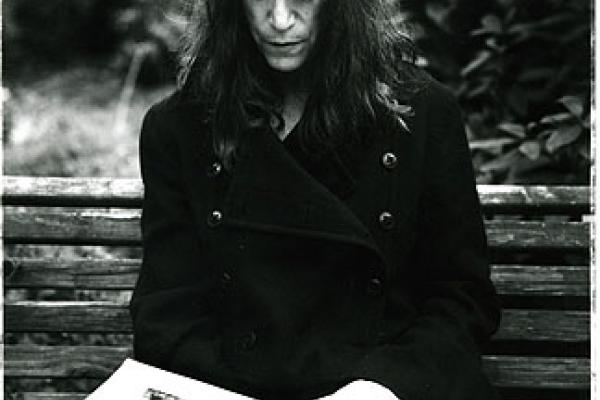"Oh Lord let me die on the back of adventure/ With a brush and an eye full of light."
These lines from the 10-minute "Constantine’s Dream" sum up Banga, the latest album from Patti Smith, even as they aptly describe the career of CBGB's Queen of Punk.
For the better part of four decades, Smith has been all about adventure. The brush is a symbol of her broad artistic canvas (she sees herself more a poet than a musician, as well as an author and photographer), and she’s ever in pursuit of what the best rock music always is interested in – light, truth and better world.
Smith's “Oh Lord” at the start of that line is no accident, it would appear. This album particularly is full of God and religious images. The song "Constantine's Dream" finds Smith on pilgrimage to Assisi, following in the footsteps of St. Francis.
There are Sisters of Mercy and prayers and salvation mentions throughout the album, which takes its title from the name of the dog that keeps Pilate company while he waits in eternity for Jesus’ forgiveness in Mikhail Bulgakov’s novel The Master and Margarita.
Smith doesn't seem entirely reverent toward Christianity, but her deep-seated Catholicism never allows her to be too irreverent either. She finds goodness where goodness can be found.
This line reminded me why I was so annoyed when Relevant Publishing wasn't keen on the chapter I wrote about Smith in The Rock Cries Out. She is undoubtedly worthy of a spiritual exploration!
Banga is a revelation. And it is Smith’s most accessible work to date. If there singles and decent radio and pop charts still existed, surely the tracks "April Fool" and "This Is The Girl" would be her biggest hits since that Springsteen co-write "Because The Night" way back in 1978.
They are beautiful and Smith’s voice is so sweet. But fear not, longtime fans, as she returns to her signature banshee wail by the end of "Constantine’s Dream." And yet, throughout the album, her longstanding back-up band is more measured, though occasionally guitars cut when Smith’s performance needs.
Smith herself is tender, — sometimes like a mother, sometimes like a nun and other times like a lover. The images she paints are poetic, scattering memorable couplets on every listen.
There are raptures on mosaic skies, eternal sons and their mothers, faithful dogs, and Amy Winehouse as a smouldering bird. Humanity’s escape from the environmental catastrophe is a recurring theme and though in places gloom and doom are winning like an Old Testament prophet, Smith concludes with hope and grace with a children’s choir joining her in Neil Young’s "After The Gold Rush."
For adventure, art, religious exploration and imagining the future of humanity, Banga is a wonderful contribution.
Steve Stockman the minister of Fitzroy Presbyterian Church in Belfast, Northern Ireland, and blogs regularly on the intersection of faith and culture at Soul Surmise, where this reflection first appeared.
Got something to say about what you're reading? We value your feedback!
